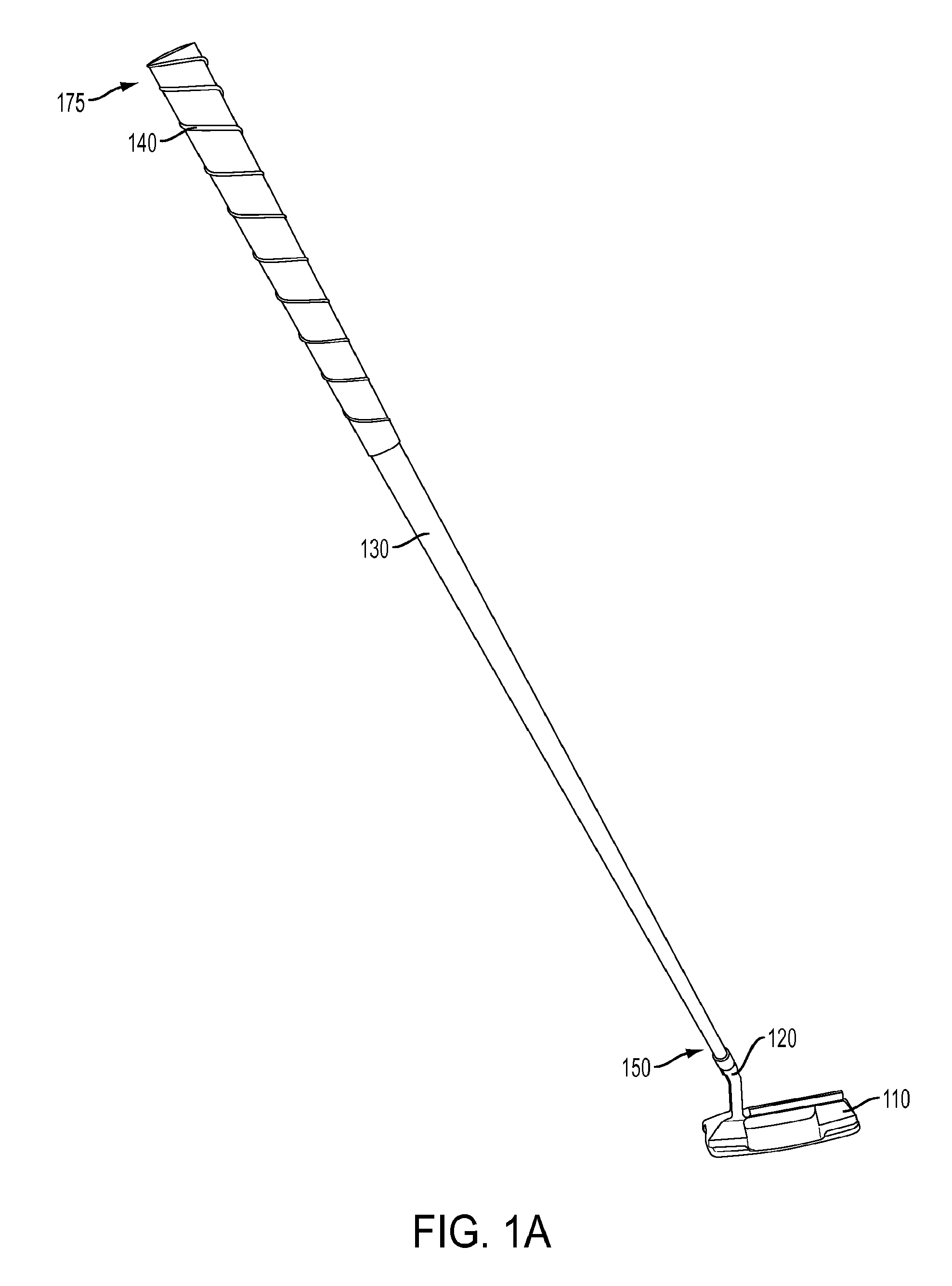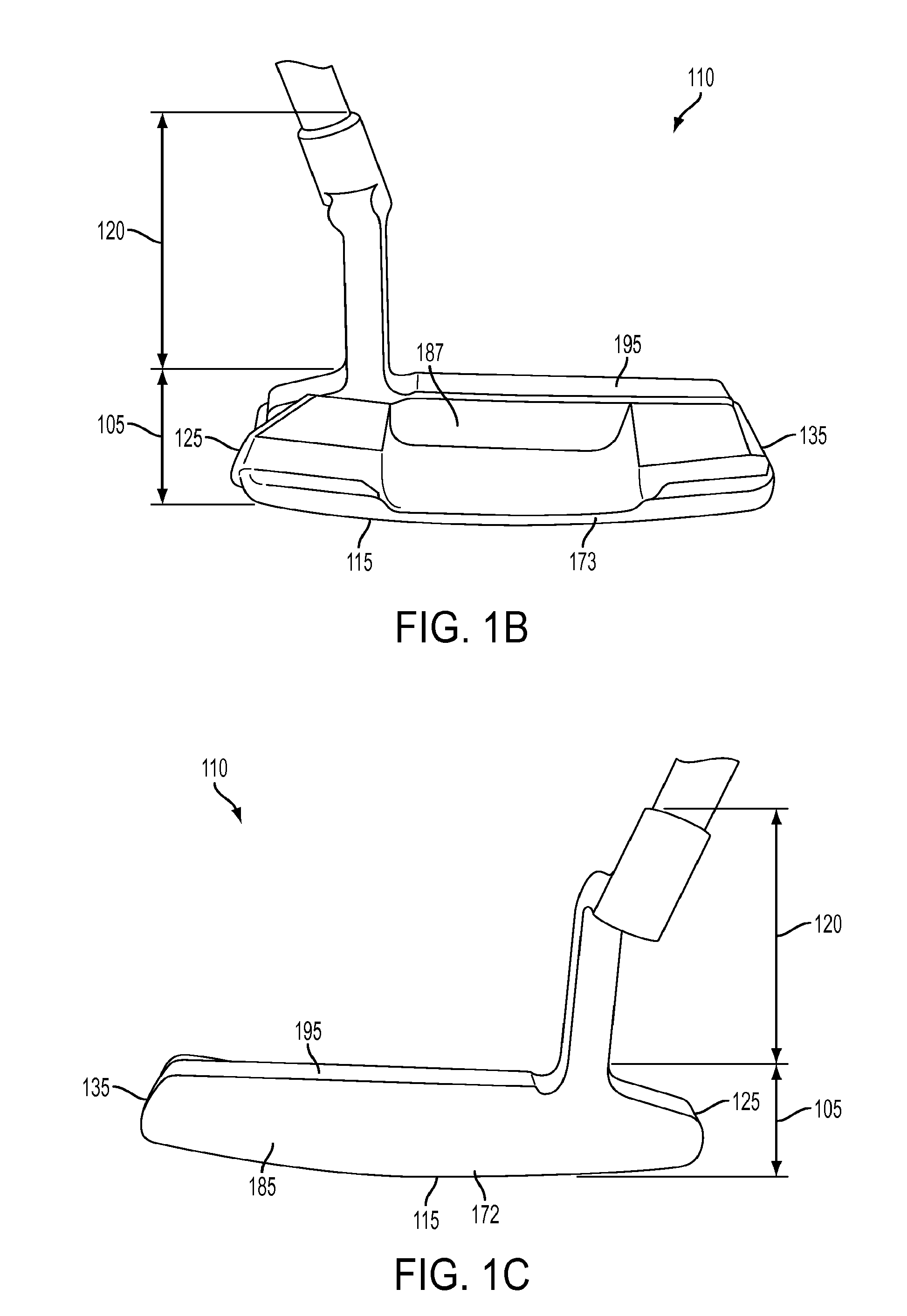Golf putter
a golf putter and putter technology, applied in the field of golf clubs, can solve the problems of increased likelihood that a golfer may have a jerky stroke, insufficient acceleration of the stroke of the golfer, directional problems, etc., and achieve the effect of optimizing the ability of the putter, enhancing the balanced point placement, and peak efficiency
- Summary
- Abstract
- Description
- Claims
- Application Information
AI Technical Summary
Benefits of technology
Problems solved by technology
Method used
Image
Examples
Embodiment Construction
[0023]Embodiments of the invention provide for a golf club with a balance point located within five inches from the sole of a club head, which is in-part achieved by using a light weight shaft of between about ten grams to about forty nine grams (without a grip) as opposed to about one hundred grams to one hundred twenty seven grams for a traditional shaft. Specifically, by using a light weight shaft, the balance point of a golf club can be located within a region above the sole and no further than five inches up from the sole of a club head as opposed to being located above seven inches from the sole of a club head in a traditional golf club, for instance a putter. Of note, the combination of light weight components in a golf club, including but not limited to the shaft and the club head can enable a overall balance point to be located near or at the club head. Of further note, a grip of between about four grams and about twenty five grams can also be coupled to the shaft to create...
PUM
| Property | Measurement | Unit |
|---|---|---|
| mass | aaaaa | aaaaa |
| mass | aaaaa | aaaaa |
| mass | aaaaa | aaaaa |
Abstract
Description
Claims
Application Information
 Login to View More
Login to View More - R&D
- Intellectual Property
- Life Sciences
- Materials
- Tech Scout
- Unparalleled Data Quality
- Higher Quality Content
- 60% Fewer Hallucinations
Browse by: Latest US Patents, China's latest patents, Technical Efficacy Thesaurus, Application Domain, Technology Topic, Popular Technical Reports.
© 2025 PatSnap. All rights reserved.Legal|Privacy policy|Modern Slavery Act Transparency Statement|Sitemap|About US| Contact US: help@patsnap.com



